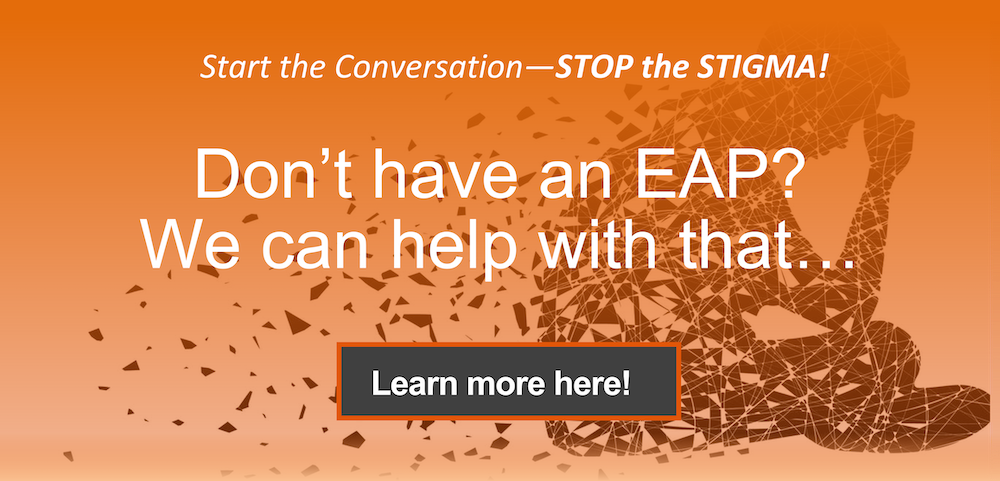Workplace safety isn't just about hard hats and safety equipment; it's about creating an environment where every employee can focus on their work without worrying about their physical or emotional well-being.
While we often think of workplace safety in terms of preventing slips, falls, or equipment injuries, today's reality requires us to address a broader spectrum of safety concerns, including the difficult but necessary topic of active shooter preparedness.
The foundation of workplace safety starts with awareness, preparation, and a culture that prioritizes everyone's well-being.
The Numbers Tell the Story: Why Workplace Safety Matters
The importance of comprehensive workplace safety becomes clear when we look at the data.
- The ILO estimates that occupational accidents and diseases result in an annual 4 percent loss in global gross domestic product (GDP), or about US$2.8 trillion, in direct and indirect costs of injuries and diseases.
- For every $1 invested in a wellness program, companies can save $3 to $5 in healthcare costs, while employees reduce risk behaviors such as smoking and overeating.
- Beyond traditional workplace injuries, the scope of safety concerns has expanded. In 2023, nearly half of HR professionals said their organization had at some point experienced a workplace violence incident, up from 36 percent in 2012.
- Meanwhile, work remains one of the most commonly cited sources of stress among Americans, with 81% of workers saying that employers' support of mental health is important to them in their future job decisions.
These statistics underscore a critical truth: workplace safety is not just about compliance. It's about creating an environment where employees can thrive both physically and mentally, leading to better outcomes for everyone involved.
Everyday Safety: Building a Foundation of Protection
The most effective workplace safety programs begin with the basics. Every job site has inherent dangers, whether that's heavy machinery, conveyor belts, or even tripping over items in the office.
Understanding and addressing these fundamental safety principles creates the groundwork for handling more complex safety challenges.
essential daily safety practices
Building strong safety habits start with these core principles:
- Stay alert and aware of your surroundings. Identify workplace hazards, know where emergency exits are located, and remain conscious of potential risks throughout your day. When employees develop this habit of situational awareness, they're better prepared to respond to any type of emergency.
- Maintain proper posture and lifting techniques. Good posture and proper lifting aren't just about preventing back injuries but about maintaining your physical readiness to respond when needed. Whether it's a forklift, dolly, lift assist, or your office neighbor Dave, your back is worth those extra few seconds to get help.
- Take regular breaks to stay sharp. Tired workers are the most prone to causing incidents. Regular breaks aren't just beneficial for productivity but essential for maintaining the alertness needed to recognize and respond to safety threats.
- Follow procedures without taking shortcuts. Workplace procedures exist to keep employees safe, so using every tool and machine according to instructions is critical. This principle extends beyond equipment use to emergency procedures and safety protocols.
Addressing the Difficult Reality: Active Shooter Preparedness
While no workplace wants to consider the possibility of an active shooter situation, preparation can save lives.
Understanding and addressing these fundamental safety principles creates the groundwork for handling more complex safety challenges.
Understanding the Threat
Active shooter situations are unpredictable and evolve quickly. Approximately 50 percent of those receiving training fully comprehend how to identify a threat and react during an attack, which is why proper preparation and mental conditioning are crucial.
The Run, hide, fight protocol
The FBI recommends a clear framework for decision-making in crisis situations. When a shooter enters the workplace, employees should follow this protocol:
- Run: If there's an accessible escape path, attempt to evacuate the premises
- Hide: If evacuation isn't possible, find a place to hide where the active shooter is less likely to find you
- Fight: As a last resort, and only when your life is in imminent danger, attempt to incapacitate the active shooter
This approach provides employees with a structured way to think through their options rather than freezing in a crisis situation.
mental Preparation matters
The importance of mental training alongside physical preparation can't be stressed enough. Natural survival responses are fight, flight and freeze. Understanding these responses and practicing scenarios helps employees overcome the natural tendency to freeze during high-stress situations.
A Culture of Safety and Support
Safety isn't just about policies and procedures, it's about fostering an environment where employees feel secure and supported. This includes addressing the psychological aspects of workplace safety and ensuring that employees have resources available when they need them.
Mental Health is a safety priority
Work is one of the most commonly cited sources of stress among Americans. When employees are struggling with stress, anxiety, or other mental health challenges, their ability to remain alert and respond appropriately to safety concerns can be compromised. Basic care for employees’ well-being is a fundamental expectation for today's competitive and successful businesses.
The role of employee assistance programs
Employee Assistance Programs play a crucial role in maintaining both psychological and physical safety in the workplace. These programs provide confidential support for employees dealing with stress, trauma, or other challenges that might affect their well-being and, consequently, their safety awareness.
reporting and communication
The best way to stop unsafe working conditions from happening is to report them to supervisors as soon as you notice them and then help be part of the solution. This principle extends to reporting concerning behaviors or situations that might indicate potential workplace violence risks.
What Companies Can Do: Building Comprehensive Safety Programs
Organizations have a responsibility to create and maintain safe work environments that address both traditional safety concerns and modern security challenges.
Effective workplace safety programs require comprehensive planning and implementation:
5 essential company actions
1. Develop clear policies and procedures
OSHA requires employers to provide medical and first-aid personnel and supplies commensurate with the hazards of the workplace. Beyond basic OSHA compliance, companies should develop comprehensive emergency response plans that include active shooter scenarios.
2. invest in regular training and preparedness
Many organizations still don’t have an active shooter response plan in place, and even fewer have trained their employees on what to do. Regular training sessions should cover both everyday safety practices and emergency response procedures.
3. build prevention through culture
Employers should disseminate safety plans through multiple means, including employee handbooks, workplace bulletin boards, and wallet cards for employees to carry.
4. provide comprehensive mental health support
Companies should ensure employees have access to mental health resources, including Employee Assistance Programs, to address stress, trauma, and other factors that can impact both psychological well-being and safety awareness.
5. conduct regular assessment and updates
Safety programs should be regularly reviewed and updated to address new threats and changing workplace conditions, including evaluating physical security measures and ensuring training programs remain current.
Moving Forward with Confidence and Preparedness
Creating a truly safe workplace requires addressing both the everyday hazards we're familiar with and the more complex security challenges of our modern world. While the topic of active shooter preparedness is difficult, avoiding the conversation doesn't make workplaces safer.
The goal isn't to create fear or anxiety, but to ensure that every employee has the knowledge and confidence to protect themselves and their colleagues. When combined with strong mental health support and a culture that prioritizes open communication about safety concerns, comprehensive safety preparedness becomes a source of empowerment rather than anxiety.
Remember, workplace safety is everyone's responsibility, and the best safety programs are those that prepare employees for a wide range of scenarios while providing the support they need to maintain their physical and emotional well-being.
When you partner with Ulliance, our Life Advisor Consultants are always just a phone call away to teach ways to enhance your work/life balance and increase your happiness. The Ulliance Life Advisor Employee Assistance Program can help employees and employers come closer to a state of total well-being.
Investing in the right EAP or Wellness Program to support your employees will help them and help you. Visit https://ulliance.com/ or call 866-648-8326.
The Ulliance Employee Assistance Program can address the
following issues:
• Stress about work or job performance
• Crisis in the workplace
• Conflict resolution at work or in one’s personal life
• Marital or relationship problems
• Child or elder care concerns
• Financial worries
• Mental health problems
• Alcohol/substance abuse
• Grief
• Interpersonal conflicts
• AND MORE!
References:
8 Workplace Safety Tips Employees Should Know; eSafety
https://esafety.com/8-workplace-safety-tips-employees-should-know/
How to Put an Effective Active Shooter-Response Plan into Practice; SHRM https://www.shrm.org/resourcesandtools/hr-topics/risk-management/pages/how-to-put-an-effective-active-shooter-response-plan-into-practice.aspx
Workplace Violence; SHRM https://www.shrm.org/topics-tools/research/workplace-violence
Striving for Mental Health Excellence in the Workplace; American Psychological Association
https://www.apa.org/topics/healthy-workplaces/mental-health


.png?width=769&height=308&name=Psychologically%20Safe%20(1).png)
